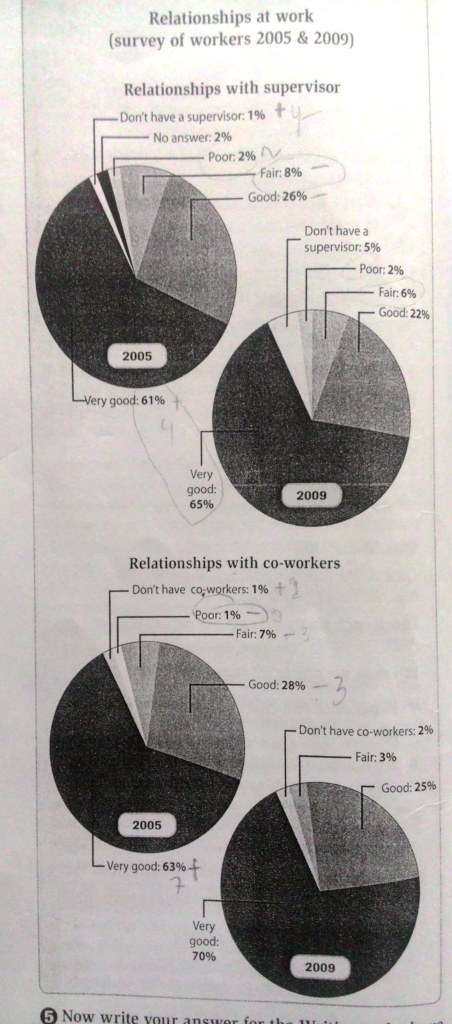The pie charts elucidate the percentage of officers' responses as per official relationships either with monitors or working partners in their own companies. Two investigations in separated years collected the data which were taken in 2005 and 2009.
In essence, it is clear that one type of responses within both graphs had been excluded which were no answer in the first chart and shallow relationships in the second one. Furthermore, it can be seen that most respondents predominantly addressed to have very good connections over the years of consideration.
As a starting point, in 2005, officers who stated that their interactions with supervisors went very well stood at 61 percent, and this figure inclined slightly to just under three-quarter of 100%. Likewise, 2009 also experienced a considerable rise to 70 percent in very good cooperative relationship with other workers. Afterwards, similar trends also exist in good relationships among two work-related communications that were shown in its each decreasing number to below a quarter with monitors and exactly 25% with partners at work.
Companies which did not involve the contribution of a supervisor rose a bit by 4% when respondents, who revealed not having a co-worker, went up very slightly to 2%. Moreover, in other options, poor relationships between workers and supervisors remained constant virtually at 2% over the survey times, while fair interactions of it witnessed a small decrease by 2%. Otherwise, fair interactions with working partners fell significantly to 3 percent.
In essence, it is clear that one type of responses within both graphs had been excluded which were no answer in the first chart and shallow relationships in the second one. Furthermore, it can be seen that most respondents predominantly addressed to have very good connections over the years of consideration.
As a starting point, in 2005, officers who stated that their interactions with supervisors went very well stood at 61 percent, and this figure inclined slightly to just under three-quarter of 100%. Likewise, 2009 also experienced a considerable rise to 70 percent in very good cooperative relationship with other workers. Afterwards, similar trends also exist in good relationships among two work-related communications that were shown in its each decreasing number to below a quarter with monitors and exactly 25% with partners at work.
Companies which did not involve the contribution of a supervisor rose a bit by 4% when respondents, who revealed not having a co-worker, went up very slightly to 2%. Moreover, in other options, poor relationships between workers and supervisors remained constant virtually at 2% over the survey times, while fair interactions of it witnessed a small decrease by 2%. Otherwise, fair interactions with working partners fell significantly to 3 percent.

